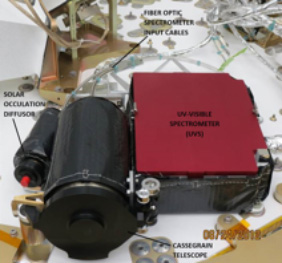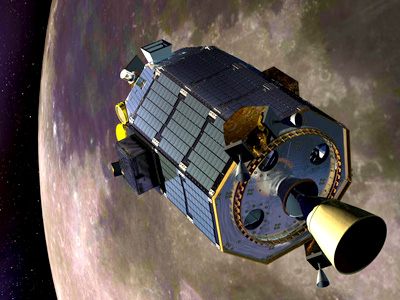Lunar LADEE Case Study
In the fall of 2009, a small spectrometer aboard the NASA LCROSS satellite detected the presence of water in a cold, polar region of the Earth’s moon.
The results of that brief mission were so successful that a similar spectrometer was added to the Lunar Atmosphere and Dust Environment Explorer, the Lunar LADEE mission, and OPCO received another call to build a second set of telescope and spectrometer optics for a lunar satellite.
Summary
Back in the early 1970’s, Apollo astronauts noticed a glow above the lunar horizon, as if there was a dusty atmosphere. This dust is presumed to be a result of: meteor impacts, the solar wind charging surface dust, which is electrostatically elevated, and surface “boiling” when the moon transitions from night to day, experiencing a 500°F increase in temperature within seconds.
As the US contemplated returning to the moon, it was important to find out more about this lunar atmosphere and develop a model of its behavior. LADEE was to attempt to answer why the dust was present, and what was the size, shape, composition, and temporal distribution of this dusty atmosphere. The newly added UV-Visible Spectrometer (UVS) on LADEE was to assist in this task.
OPCO Solution
The first component of the spectrometer was the entrance optics, which needed to be the biggest photon bucket the payload could support while providing the largest signal possible to the spectrometer because of the very low density of isolated atoms, small molecules, and radicals in the lunar atmosphere.
For this task, OPCO built 3-inch diameter non-imaging Cassegrain telescope optics to focus a 1-degree field of view into an optical fiber coupled to the entrance slit of the spectrometer.
We also produced the collimating and focusing mirrors and the diffraction grating for the f/4 spectrometer, which has a wavelength range of 230-810nm.
And, to complete the UVS optics, OPCO provided the optics for the Solar Occulation Diffusor, the optic that looks directly at the sun and coupled this light to a fiber optic input to the spectrometer.
Benefits
The conclusion of the mission occurred on April 17, 2014, when LADEE succumbed to the moon’s gravity and fell to its demise, producing yet another plume of dust to add to the lunar atmosphere. During this time the OPCO optics have collected solar, atomic and molecular emission; measured dust particle sizes and mapped their temporal behavior; and measured dust composition for many common species such as Na, K, Si, Al, Mg, Ca, Ti, Fe, OH, and water.
Congratulations NASA and the LADEE Team on a successful mission and on the collection of over a million spectra on LADEE’s UVS!
And if that’s not enough, in December 2014, the LADEE mission has received the Popular Mechanics 2014 Breakthrough Award for innovation in science and technology.

